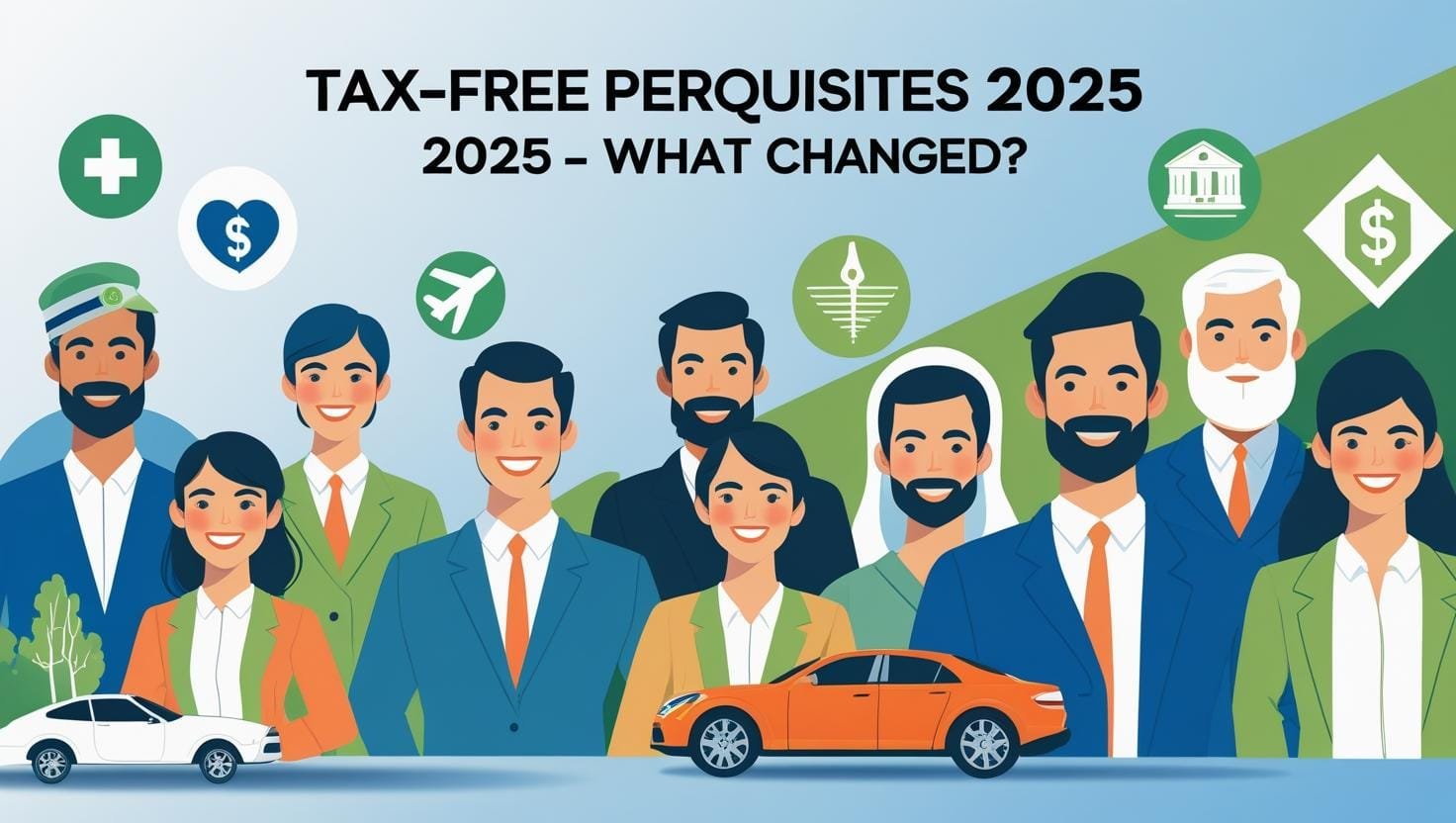Major Changes to Tax-Free Perquisites: What Employees Must Know in 2025
The Central Board of Direct Taxes (CBDT) has announced significant revisions to tax-free perquisites that directly impact salaried employees. Through Notification No. 133/2025, dated August 18, 2025, the government has raised outdated thresholds and provided much-needed relief for low and middle-income employees.
These changes will make perquisites like interest-free loans, employer-sponsored medical treatment, and non-monetary benefits more accessible without adding to an employee’s tax liability.
In this article, we will break down the latest updates, their implications, and what it means for employees.
🧾 What Are Perquisites in Income Tax?
In simple terms, perquisites are benefits or facilities provided by an employer to an employee, in addition to salary.
These can include:
Free or subsidized housing
Company-provided car
Interest-free or concessional loans
Free education for children
Medical reimbursements or treatment expenses
Until now, many of these benefits were taxable if provided to “specified employees” or those crossing a certain income threshold.
✅ Key Changes in Tax-Free Perquisites
1. Specified Employees Threshold Raised
Earlier Limit: Employees earning more than ₹50,000 were considered “specified employees.”
New Limit: The threshold has now been increased to ₹4 lakh annual salary income.
👉 Impact:
Employees earning up to ₹4 lakh annually are no longer classified as “specified employees.”
This means they won’t be taxed on certain non-monetary perks, such as:
Interest-free or concessional loans
Free education for children provided by the employer
Company-provided car, domestic help, or utilities
This change is particularly beneficial for entry-level employees and workers in smaller towns where salaries may be modest, but perks form an important part of compensation.
2. Overseas Medical Treatment Threshold Raised
Earlier Limit: Exemption was available only if gross total income did not exceed ₹2 lakh.
New Limit: The threshold has been raised to ₹8 lakh gross total income.
👉 Impact:
Employees with annual income up to ₹8 lakh can now avail employer-sponsored overseas medical treatment without it being taxed as a perquisite.
This includes:
Cost of treatment abroad
Travel expenses for the patient
Travel and stay for one attendant accompanying the patient
In today’s world, where medical costs abroad can be extremely high, this revision offers genuine relief to middle-income families.
📜 Legal & Regulatory Updates
These revisions were introduced through CBDT Notification No. 133/2025.
Two new rules—Rule 3C and Rule 3D—have been added to the Income-tax Rules, 1962.
Importantly, these are not part of the Income Tax Amendment Bill, 2025, meaning they were not subject to parliamentary debate. Instead, the CBDT used its delegated authority to make these changes.
🧠 Expert Insights
Tax experts have welcomed the move, noting that:
The earlier thresholds (₹50,000 for specified employees and ₹2 lakh for overseas medical treatment) were set decades ago—in 2001 and 1993, respectively.
These limits were completely outdated given current inflation, cost of living, and healthcare expenses.
Updating the rules to ₹4 lakh and ₹8 lakh brings much-needed rationalization.
Experts also note that the CBDT now has clear authority to revise these thresholds in the future, allowing for more dynamic adjustments without waiting for full parliamentary approval.
🌟 Why These Changes Matter for Employees
Relief for Middle Class: Employees in the ₹3–8 lakh salary range will benefit the most.
Encouragement for Employers: Companies may now offer more non-monetary perks without worrying about tax burdens for employees.
Healthcare Security: Overseas treatment exemption recognizes the rising global healthcare costs, making critical care more affordable.
🔑 Key Takeaways
Specified employees’ limit increased from ₹50,000 to ₹4 lakh salary income.
Overseas medical treatment exemption limit increased from ₹2 lakh to ₹8 lakh gross income.
Benefits include interest-free loans, free utilities, and employer-sponsored medical treatment abroad.
Changes effective from August 18, 2025, under CBDT Notification 133/2025.
📌 Conclusion
The new rules on tax-free perquisites mark a positive step toward employee welfare. By modernizing outdated thresholds, the government has provided relief to lakhs of salaried individuals who rely on perks as part of their overall compensation.
For employees, this means less tax liability and more take-home benefit value. For employers, it opens up the opportunity to structure compensation packages more attractively.
As always, taxpayers should stay updated on compliance requirements and consult experts to make the most of these exemptions.
tax-free perquisites 2025, CBDT Notification 133/2025, Section 3C Income Tax Rules, overseas medical treatment tax exemption, specified employees threshold income tax, perquisites rules India 2025, new perquisite exemption limit, salary perks tax free

